"Save the ta-tas." The bumper sticker glared back at me as I made my morning commute to work as a breast cancer researcher, as if I needed reminding that October is Breast Cancer Awareness Month. These days, I'm seeing the iconic pink ribbon plastered on any and all "woman-friendly" products, from pink frying pans to my face lotion -- even on my favorite bottle of grocery store wine.
Of course, breast cancer is not the number one killer of women -- it's heart disease. Nor is it the number two killer of women in the United States -- that's lung cancer. Breast cancer is the third leading disease killer of women in the United States. Breast cancer claimed the lives of 39,510 women last year, while about 267,000 died from heart attacks and 73,660 died from lung cancer. October is also domestic violence awareness month -- at least 1 in 4 women experience domestic violence in their lifetime (compared to an 1 in 8 lifetime risk for breast cancer) -- but I bet you didn't learn that in your grocery store checkout line. Women face many bigger health threats, yet breast cancer is one of the most researched, well-funded, highly advocated and commercialized diseases in history. Why has this disease garnered so much national attention? Is it really about saving women, or, as that bumper sticker suggests, is it more about saving breasts?
Breast cancer is typically presented as a "sexy" disease, one that affects young women's bodies, even though 95% of new breast cancer cases occur in women 40 years or older, and the median age of a breast cancer diagnosis is 61. A PSA by Rethink Breast Cancer that hit airwaves in 2009 featured a young woman in a bikini prancing around a pool. After a few lustful glances from the men poolside, the text appears: "You know you like them. Now it's time to save the boobs." For years now, longtime NYC shock jock Howard Stern has used breast cancer awareness month to perform breast exams on sexy models over the airwaves. The Keep a Breast Foundation's slogan, which they print on T-shirts and colorful plastic bracelets, is "I [heart] Boobies!"
Several years ago, The Breast Cancer Fund tried to tweak this trend with an ad picturing a young woman in matching purple undergarments pulling down one of the cups of her bra to reveal a mastectomy scar. The tagline read, "It's no secret. Society is obsessed with breasts. But what are we doing about breast cancer?" The ad was set to run in San Francisco bus shelters but was pulled because the scar was thought to be too disturbing to riders. Apparently, we need to see young, intact, firm ta-tas in order to save them.
As Barbara Ehrenreich has said, the breast cancer movement that empowered women a decade ago has been replaced by a "pink ribbon culture." No organization would dare make heart disease or lung cancer into a sexy disease. Cancerous breasts threaten idealized femininity and the eroticization of the female body, and these "awareness" campaigns are no different from the over-sexualized and fetishized imagery in mainstream culture, which reduces a woman's value to her body parts.
To be sure, awareness is an improvement over fear and shame. Before the pink ribbon campaign emerged in the 1990s, the mere discussion of breast cancer was taboo and hidden from public discourse, and research funding was pitifully small. As mammography screenings increased, more women were diagnosed with breast cancer and joined advocacy groups, and policymakers took notice.
The National Cancer Institute spent $631.2 million in taxpayer money on breast cancer research in 2010 compared to $281.9 million for lung cancer. The Susan G. Komen for the Cure Foundation raised over $470 million from HQ and affiliate programs that year. By comparison, the American Heart Association's Go Red for Women campaign to increase awareness of heart disease in women raised just about $30 million last year through fundraising efforts. By these numbers, the number three killer of women generates 15 times more funding than the number one killer of women.
I personally know the pain to losing a loved one to breast cancer. The first funeral that I ever attended was my aunt's. She had a kind spirit and a laugh that could brighten anybody's day. She succumbed to a long battle of breast cancer in her late 30s. Losing her was what drove my passion for women's health and led me to breast cancer research. And yet I have lost more female family and friends to heart disease than I have to breast cancer.
The tragic reality of breast cancer has brought thousands of women together to advocate for their health and for the government to fairly allocate funds into breast cancer research. The increased attention has brought better treatment options and increased survival rates for women. Unfortunately, the commercial sector saw a window of opportunity to capitalize and "sexify" breast cancer. When a corporation wants to attract female customers, they strategically place a pink ribbon on the product and claim that a portion (usually an unnamed amount) will be donated to breast cancer research. And women everywhere endure a month focused on our ta-tas.
To the pink ribbon advertisers and well-meaning supporters, my plea is still the same one I had in high school: Please, stop staring at my breasts!
Jessica Holmes is a public voices fellow with The Op-Ed Project and a Postdoctoral Fellow at Emory University Nell Hodgson Woodruff School of Nursing.